Like many of you, I developed new hobbies during #stupidcovid. One of those was gardening. During quarantine, with extra time on our hands, we were ready to turn farmer. Boy, oh boy were we excited. And after being cooped up in the house for a couple of months, we were ready to be outside and to be breathing the fresh air. Turning the soil. Being one with the earth. Enjoying the fruits of our labors. We were going to coax sustenance out of the earth, and we were going to be gardening warriors.
Well, that isn’t quite how it turned out. Enter reality. We did all of the above, but the romanticized image of gardening that you see on Pinterest is a bunch of bullcrapola. It’s dirty, sweaty, buggy, expensive work. It involved broken nails, bloody legs, sunburn, heartbreak and utter disappointment.
Last year, we tried again. I expanded the garden, joyfully marked pages in my seed catalog, and toiled happily in the soil. The result: better but still not awesome.
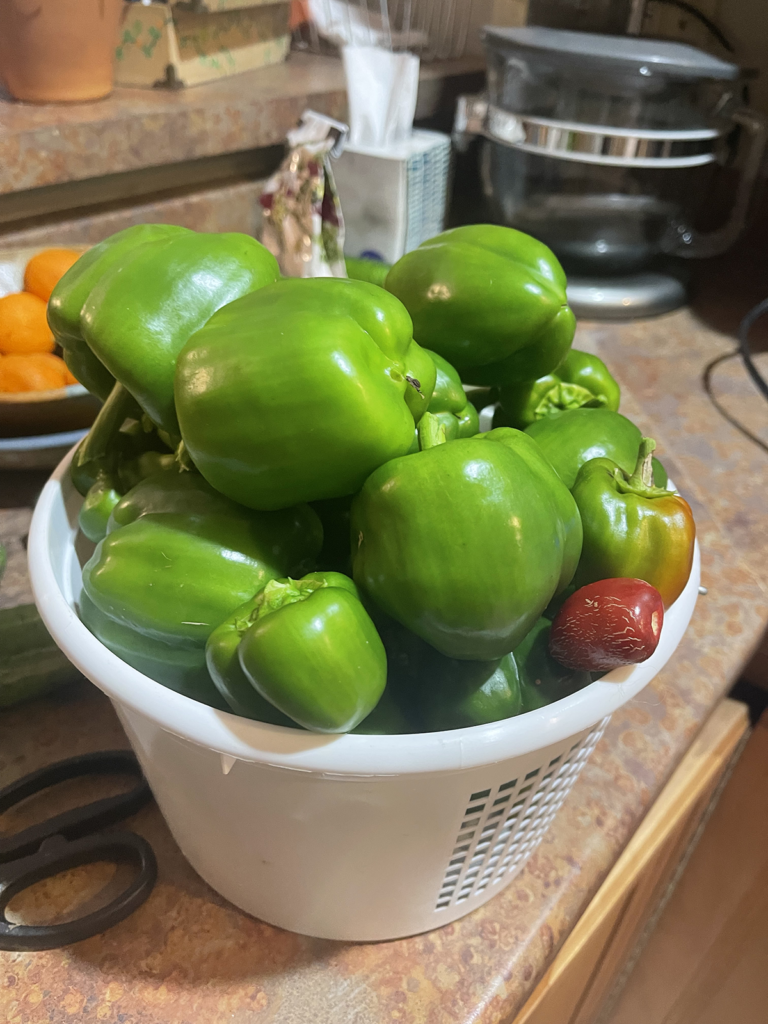
We had some successes (can you say green pepperpalooza?!) and some failures (oh, watermelon that died just before picking, you broke my heart). And, I learned to hate, in no particular order, white flies, squash bugs, squash borers, aphids, deer, chipmunks and white mold. Let’s just say that, when it comes to home gardening, the universe is out to get you.
Still, here I sit happily looking back on year three of serious gardening, and I’m reflecting on some of the lessons that I learned in the past couple of years. Lessons I wish I had taken to heart before we embarked on the journey last year. They might have saved us a little heartache (and a bit of money).
1. Go ahead and be excited but make no mistake: gardening is work. Unless you plan to simply throw a plant or two into a pot, plan on putting in a lot of hot, sweaty, expensive work.
Still, take that first step or you’ll never get anywhere at all. We started here.
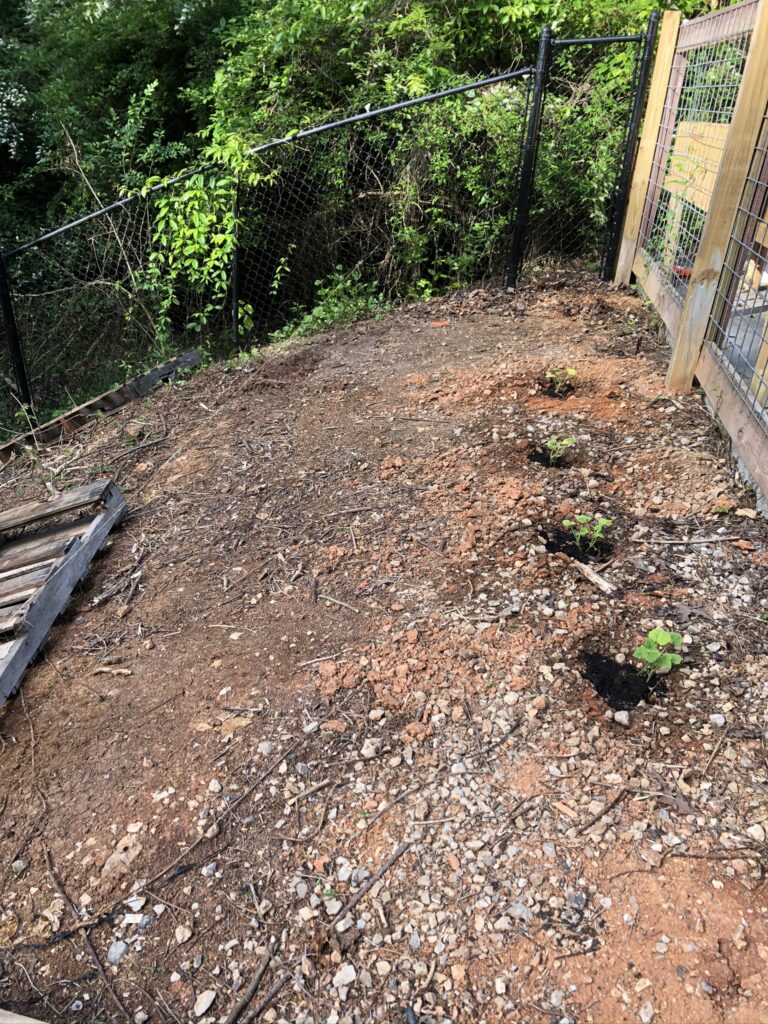
This was work. I had to dig a trench to outline the bed. Then, hubby had to go to big box store and get a 2″ x 18′ (yes 18 feet) board for the frame. His little Subaru looked like an ant carrying a straw on its back.
After framing it in, fencing it and dumping in what seems like 100 bags of dirt (and gashing my finger along the way), I replanted the squash and then broadcast a whole package of kale seeds. Now all we had to do was wait and see.
2. The work doesn’t stop after planting. Commit to a full season of work if you really want to be successful.
We kinda had a “plant it and it will grow” mindset. And it sort of did as you can see.
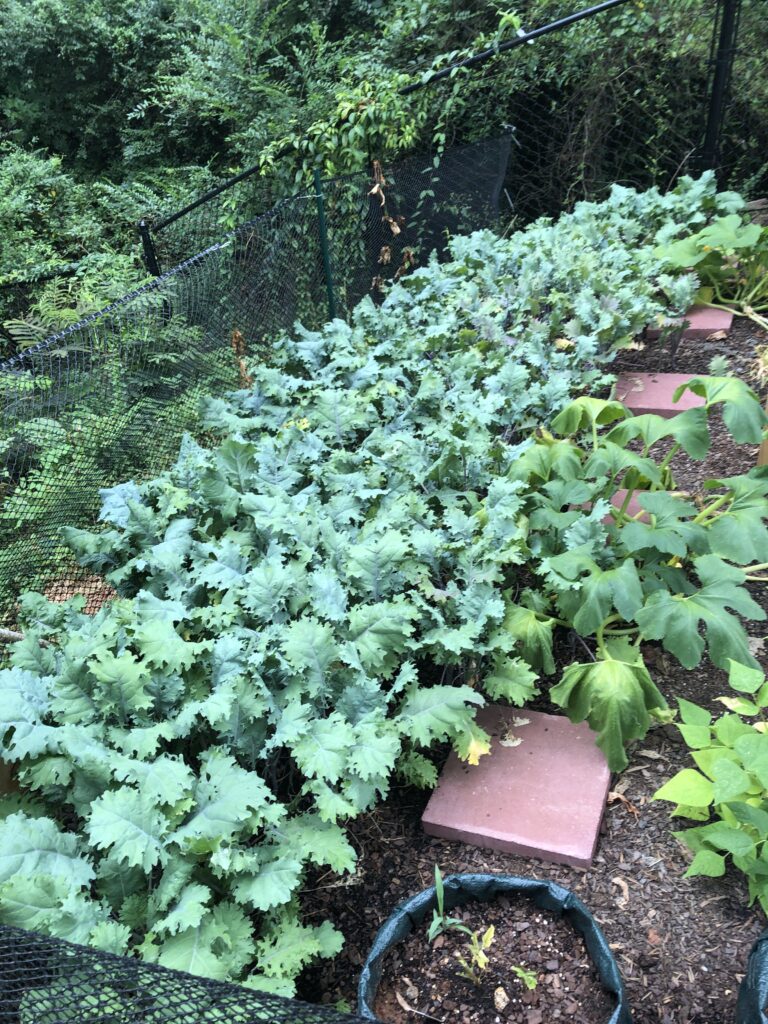
But, as you can also see, things grow and then they become droopy. Or dried out. Or bug-eaten. And all of those things happened to our garden. If you look at the bottom of this pix, you will see a grow bag. It has a blue potato plant in it. My pride and joy. Except, I apparently did something wrong, and one day, it was just dead. I found one tiny blue potato in the dirt–about the size of a dime.
You have to work in the garden after you plant. You will need to weed, to check for bugs, remove bugs by hand (or with tape, as I did for the squash beetles). You will need to water, or to avoid watering, prune, mulch, stake and tie.
It is a lot of work.
But, the trade off is the harvest. I picked my last mess of kale in January when I was preparing the bed for this year. And we enjoyed our heirloom tomatoes tremendously through the fall. And, I babied my three basil plants through a very long winter, and they are back and flourishing this year. It is a lot of work, but it is worth it.
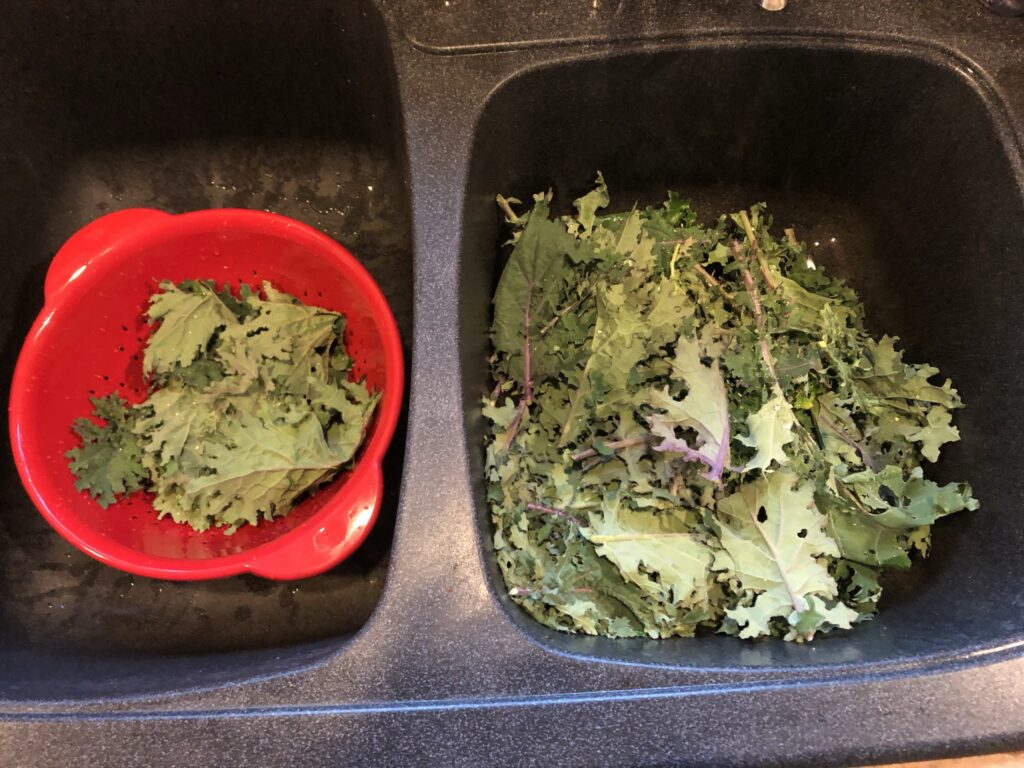
3. Build it and they will come. Bugs that is. You have to work at stopping or, at least, controlling them.
After our pumpkin plants had grown to cover a huge portion of the yard, I was pretty smug in thinking that we had this gardening thing down. But then our butternut squash started wilting and then dying. Then the spaghetti squash. The yellow squash had already fallen over and was brown. We started researching and found that bugs were likely the problem, and boy was that right. We found the culprits, but removing them was a daily chore and detailed work.
Then the pumpkins, our pride and joy, started dying. Daughter researched and ended up doing a gardening form of exploratory surgery and found the wormy culprits deep in the stems. We treated as best we could, but, in the end, all pumpkins died.
We are pretty committed to organic gardening, so we chalked up last year as a learning year. The only advice I have here is to research. A lot. I have my local Extension Agency website bookmarked, I have a whole Pinterest board dedicated to gardening, and I have done all I can to prevent the bugs. Stay tuned for how that works.
4. Gardening can be is expensive.
I don’t even want to figure out how much money we spent ovr the past couple of years, but assume it was a lot. Way more than we saved by growing instead of buying veggies. And now that I know more about the importance of the right soil, we’ve spent a decent amount already this year. But a couple of things to consider.
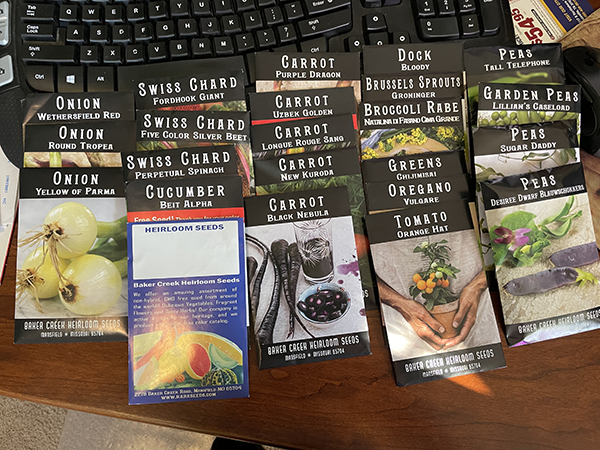
- Some of what we spent can be amortized over several years. The materials for the bed I created, for example, or the grow bags. And the dirt will be reused with a some thoughtful care. This year, I bought grow lights, but they should last a very long time (and I am actually using them now for some of my houseplants).
- The first year, we started a little later than is ideal, so we had to buy plants. Now, I start from seeds and that should save quite a bit (I spent less than $100 on a ton of heirloom seeds from Baker Creek Seeds–still less than I spent on seedlings in the past). We also save all of the containers that the store bought plants come in, so I have all the pots I need for seed starting.
- As already noted, our yard isn’t ideal for a garden, so a lot of our growing has to be done in buckets, grow bags, or raised beds. That all cost money. We picked up used containers where we could, but a lot of money went into creating places to plant. Take note: garage and estate sales are great places to find used pots that are dirt cheap (you see what I did there–LOL).
- The yard desperately needed work, and the gardening forced us to do that. It was money well spent in that regard.
- The cost of the garden was still less than the cost of a therapist or a gym membership (although, I also bought a treadmill during quarantine, but that’s another story). And I really cannot put a price on the value of the time I had with hubby and daughter, the feeling of sitting in the dirt with the sun on my back, or the joy of picking a mess of beans or eating a sun-warmed tomato fresh from the vine.
Gardening is rarely about saving money (although I know it can be), but it is well worth the investment you make in yourself.
5. Cilantro is a pain in the butt to grow–but so worth it
I have had a lot of luck growing basil, parsley and thyme, but no matter how many cilantro plants I put out (and there were MANY, MANY, MANY), none really did well. I read and researched and tried different pots, different soil, different fertilizer, different spots, all to no avail.
But then I sort of got it. Last summer, I tossed out a bunch of seeds in the tomato beds instead of putting them in pots. Voila! Cilantro! And then more. Then a little more. Then, cilantro everywhere. The cilantro loved the tomato bed. We were flush with cilantro!
But it got better. After I pulled out the tomato plants in the fall, the cilantro was still carrying on. Big, bushy, flavorful cilantro. Then the frosts and freezes started. I would lose it then, surely. Nope. It soldiered on. For some of the worst weather, I threw a plastic tarp over it, and it did just fine. The cilantro was loving life. So this year, as I write, I still have a garden full of cilantro. I’ve pulled up a lot to make way for the tomato plants, but all is well in cilantro land.
Lesson learned: broadcast the seeds and just leave them alone. Sow it and it will come.
Gardening really is good for the soul
I spent time last winter planning, researching and rereading Barbara Kingsolver’s Animal, Vegetable, Miracle again for inspiration. The first two years were learning years in our new gardening environment. This year, I got plants in the ground on time, and the ones that could be in pots were put in pots. Additionally, I kept a notebook to help me stay organized. Now, I’ve planted my first fall garden, and, truthfully, I have an unrealistic amount of optimism about how this will all work. Stay tuned, and every now and then, I will share the wins and losses along the way. Unless I am an utter fail. Then I will just keep that to myself.
So, I really would like to know: what lessons were you taught in your early years of gardening or in your new location? Leave them in comments below, and I promise I will either laugh, cry, take notes or otherwise commiserate with you. LOL!

